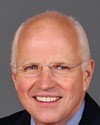If I'm correct in this, I think we've had a 60% positive outcome. Of all those who have applied, 60% of them have been approved, which is quite high in circumstances like that. The deputy is just handing me the number now. We've had 3,100 applications and almost 2,100 approved. Some of those cheques haven't been released yet, but I think the number of cheques released is 2,051, so that's where we get the 60% rate.
As you know, the medical condition is the key to many of these cases. This is what's frustrating to some, because you could have a cancer, but if it's not on the list that was established by the Institute of Medicine, which establishes those lists of conditions, that would be the problem. Some of them will say they have a particular cancer, and that body of medical evidence that we relied upon really is, in most cases, the determining factor. In many of these cases we have gone above and beyond the call of duty to identify where these people live and if they do in fact have the condition.
I'll back up a little bit, Ms. Sgro. This was a combination of those who had served in the military and civilians. As you all know, we brought the boundaries way out beyond the base—five kilometres, in fact—because my argument was that the drift of these chemicals could have made a difference in those particular communities. We have relied on everything from school records in some of those rural schools to taxes paid in the community at a particular time, birth certificates, everything we could to unravel the puzzle and make sure we reached out as much as we could.
I'm pretty pleased with the acceptance level. At the end of the day, we will have left money in that fund, which is the second part of your question. That is a result of my going to cabinet and asking for enough to get the job done, assuming that we could have had more.

